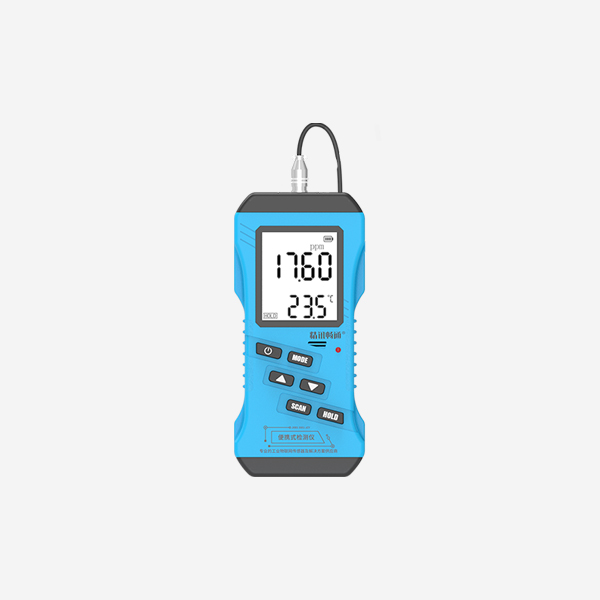Agriculture is the backbone of the global economy, providing food and raw materials for various industries. However, traditional farming practices are no longer sufficient to meet the increasing demand for food, fiber, and fuel. Climate change, soil degradation, and water scarcity are just some of the challenges that modern agriculture faces. Precision agriculture, also known as smart farming, presents a promising solution to these challenges. One of the key technologies driving precision agriculture is soil sensor technology. In this article, we will explore how soil sensor technology is transforming agriculture and optimizing nutrient management for sustainable crop production.

Understanding Nutrient Management:
Nutrient management is critical to sustainable crop production. Plants require various nutrients, such as nitrogen, phosphorus, and potassium, for growth and development. However, over-fertilization or under-fertilization can lead to nutrient imbalances, reduced crop yield, and environmental pollution. Furthermore, different crops have different nutrient requirements, and soil conditions can affect nutrient availability. Traditional fertilization practices, such as blanket application rates, may not provide sufficient nutrient management. Soil sensor technology offers a more precise and sustainable approach to nutrient management.
Soil Sensor Technology:
Soil sensors are devices that measure various soil parameters, such as moisture content, temperature, pH, nutrient levels, and salinity. These sensors utilize different technologies, such as capacitance, electrical conductivity, and optical sensing. Soil sensor networks can be deployed across large agricultural fields, providing real-time data on soil conditions. This data can be collected and analyzed using software platforms to generate insights and recommendations for optimal nutrient management.
Precision Fertilization:
Precision fertilization is a key application of soil sensor technology. Soil nutrient sensors can monitor nutrient levels in the soil, enabling precise nutrient management. This data can be used to adjust fertilizer application rates, timing, and placement, minimizing waste and maximizing nutrient uptake by plants. For example, nitrogen sensors can help identify areas of the field with higher or lower nitrogen levels, allowing for targeted fertilizer application rates to maximize crop yield and minimize nitrogen loss to the environment.
Site-Specific Nutrient Management:
Site-specific nutrient management (SSNM) is another application of soil sensor technology. SSNM involves adjusting fertilizer application rates based on soil conditions, crop requirements, and yield goals. Soil sensors can provide real-time data on soil conditions, enabling SSNM to be implemented at a more precise and sustainable level. In addition to soil sensors, other technologies, such as remote sensing and geographic information systems (GIS), can be used to map soil variability and optimize SSNM.
Cover Crops:
Cover crops are an essential component of sustainable agriculture, providing multiple benefits, such as reducing soil erosion, improving soil health, and suppressing weeds. Cover crops can also help manage soil nutrients by scavenging residual nutrients from the previous crop and fixing nitrogen from the atmosphere. However, cover crop management can be challenging, as the timing of cover crop termination can affect nutrient availability for the subsequent crop. Soil sensors can help optimize cover crop management by providing real-time data on soil moisture and nutrient availability. This data can be used to adjust cover crop termination timing, maximizing the benefits of cover crops for sustainable crop production.
Data-Driven Decision Making:
Soil sensor technology generates vast amounts of data on soil conditions and crop performance. This data can be collected and analyzed using software platforms to generate insights and recommendations for optimal nutrient management. Advanced analytics and machine learning techniques can identify patterns and trends, enabling data-driven decision making. For example, soil data can be used to identify areas of the field with higher nutrient levels, allowing for targeted nutrient management practices to maximize crop yield and minimize waste.
Adoption Challenges:
While soil sensor technology presents great potential for agricultural efficiency and sustainability, there are still challenges to its widespread adoption. One of the primary challenges is the cost of equipment and installation. Furthermore, there is a need for skilled personnel to manage and interpret the data generated by soil sensors. Additionally, some farmers may be resistant to change traditional farming practices. However, with advances in technology and increased awareness of the benefits of precision agriculture, the adoption of soil sensor technology is expected to increase in the coming years.

Conclusion:
Soil sensor technology is transforming agriculture by enabling precise monitoring and management of soil nutrient levels. With real-time data on soil moisture, temperature, pH, and nutrient levels, farmers can optimize fertilizer application rates, timing, and placement, implement SSNM, and enhance cover crop management for sustainable crop production. Data-driven decision making based on soil sensor data can lead to enhanced crop yield, reduced waste, and improved sustainability. While challenges to adoption remain, the potential benefits of soil sensor technology for modern agriculture are significant. As the world population continues to grow, the need for smart farming practices will only increase, and soil sensor technology will play a critical role in meeting this need.
